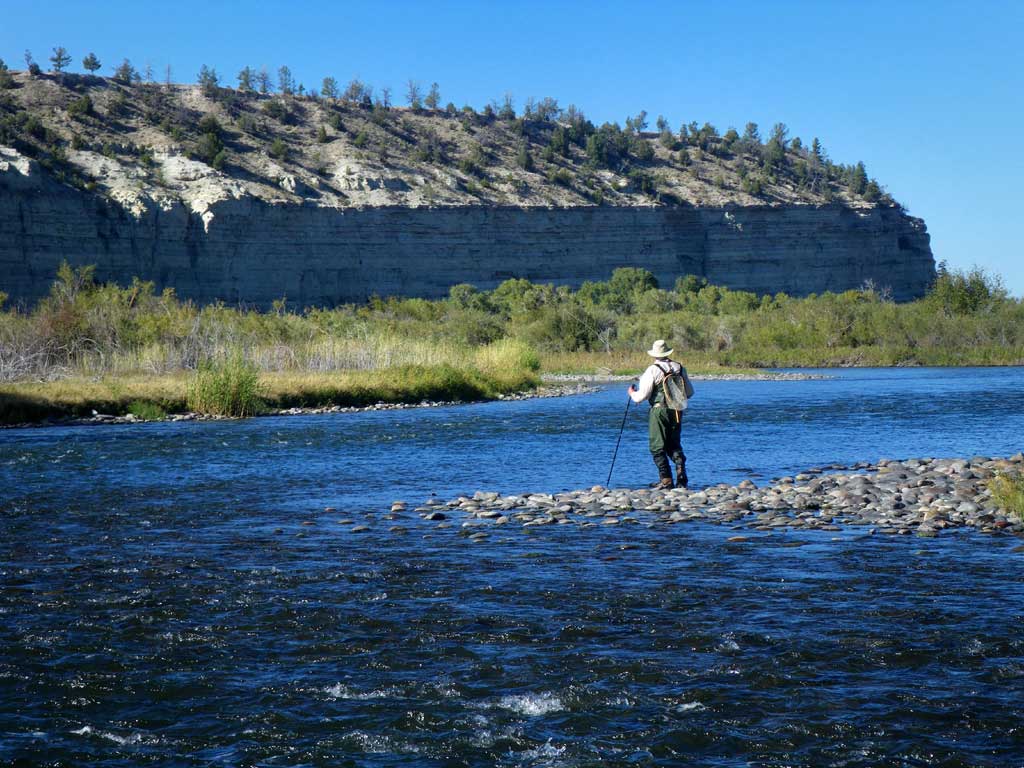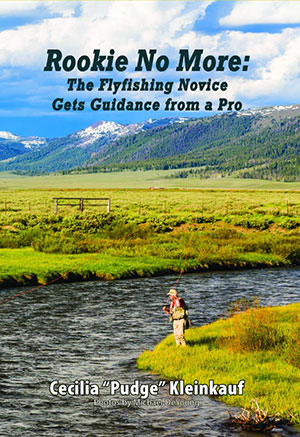Safety Tips for Fly Fishers

photo by Robert Gillespie
Question: “What safety precautions should I take when I go out fishing?”
Answer: We seldom think anything is going to happen to us out fishing, but you never can tell. Most people who enjoy the outdoors recommend not going by yourself if you’ll be fishing where there aren’t other people around, but even if you’re going with a friend, here are some recommendations that should become part of your fly fishing life.
Before you leave home, always check the weather were you’re going so you’re prepared with proper rain or cold-weather gear. I tell my clients to bring a warm hat and gloves in case of an unexpected change of weather. The old saying that most of your body heat goes out through your head is absolutely correct. Hypothermia is a real possibility whenever you are outside. Did you know that you can even become hypothermic when the sun is shining?
If it’s been raining, check the stream flows on the Internet for the river where you’re going so you can choose another fishing spot if the CFS (cubic feet per second) is too high for safe wading at your planned destination. Always be sure to let a neighbor or friend know where you’ll be going and when you expect to return. If you’re going to be off the beaten path, leave a map or list of landmarks and even GPS coordinates, if you have them, with that person, as well as on the kitchen table at your house. Always start with a full gas tank too.
If you will be hiking in an area without defined trails that you aren’t very familiar with, leave markers along your route with bright yarn (not crumbs) so that you’ll be able to find your way back to your car. Track your route with a GPS if you have one. It is incredibly easy to get lost just a short distance from the road, and it’s very scary to find yourself suddenly wandering around trying to figure out where your vehicle is. It’s also scary to discover that you have waded up or down a stream for quite a distance and you’re not sure where you first entered the water. Always leave some definite marker on the bank at your starting point.
It’s a good idea to take signaling devices, such as road flares, and your cell phone with you, but small things are also valuable. A whistle (storm whistles are the loudest), or a mirror with which you can signal of alert other anglers on the water such objects. Hopefully, you’ve already learned the lesson that you stayed on the river too long and are now going to have to hike back to the car in the dark, so you’ll always carry a headlamp or small flashlight hooked to your vest. You should carry a space blanket and Swiss Army knife or Leatherman tool as well. Make sure you know how to read a compass and take one along. Light-anywhere matches should always be in your pack as should a disposable lighter. Zip-lock bags, adhesive tape, any medications that you must take daily, Tylenol, power bars, and sunscreen are also necessities. It’s not a bad idea to have a couple of small pouches of dried food in your vest, either, except, perhaps in bear country. A couple of folded-up black plastic bags don’t take up any space at all in your and they can turn out to be useful for a lot of things including morphing into an emergency raincoat.
Most people neglect to take enough water with them, never dreaming that they will get lost and need it, but if you want to avoid having to drink from a stream that may be filled with giardia, carry some water-purifying tablets or a water bottle with a built-in filter.
Both men and women often avoid drinking water when they are fishing so that they don’t have to take down their waders when they have to “go.” That’s a big mistake. It’s amazing how quickly you can become dehydrated in the outdoors and go into shock. Don’t risk it. Drink plenty of water (not coffee or soda or even energy drinks.) If you have taken a first-aid or CPR class also put the laminated skills cards you get in those classes in the back of your vest along with a map of the area.
Safety on the water starts with wearing a wading belt at all times. It should be snug around your waist so that if you fall in the water your waders won’t fill up right away. Wading itself can be very dangerous, and a good rule to follow is “don’t wade in water over your calf.” It’s also a good idea to follow any instinct that says the water is too deep or too fast. Simply don’t go there. Look for other places in the river where you feel safer. Remember, no fish is worth drowning for.
Women need to keep in mind that they often cannot wade where men can wade. That is not just because guys are usually heavier and taller than women, it’s also because a man’s center of gravity is in his shoulders and a woman’s is in her hips. Just imagine how differently the water is going to push against each type of body.
Women also have the issue of menstruation to deal with, and often are concerned about attracting wild animals during their monthly flow. Wearing tampons instead of pads can alleviate much of that worry. Just remember to take some small zip-lock bags for disposal in the camp fire or carried out as part of the day’s trash.
One of the very best safety devices for people fishing rivers is a wading staff. Man people think that they are good, competent waders and don’t need a staff. Then, when they find themselves in trouble in the water, they’d give anything to have one. The Folstaf is without a doubt the best wading staff on the market. It folds up like a shock-corded tent pole into a small pouch you can wear on your wading belt. Just slide the pouch around behind you when you don’t need it, and it’s there when you want it. My staff has saved my hide more than once!
Polarized sunglasses and a hat with a good brim are two essential fishing items that also help us avoid eye damage from sun glare. Other important items are sunscreen, which prevents sun poisoning, and bug repellant, which helps avoid bee stings and other biting insects. If you have even been stung badly by a bee, hornet, or wasp, then you should (with your doctor’s advice) also carry an EpiPen injector in your vest. It could save your life.
A helpful resource is Emergency Survival: Pocket Guide by Christopher Van Tilburg (Mountaineers Books, 2001).












